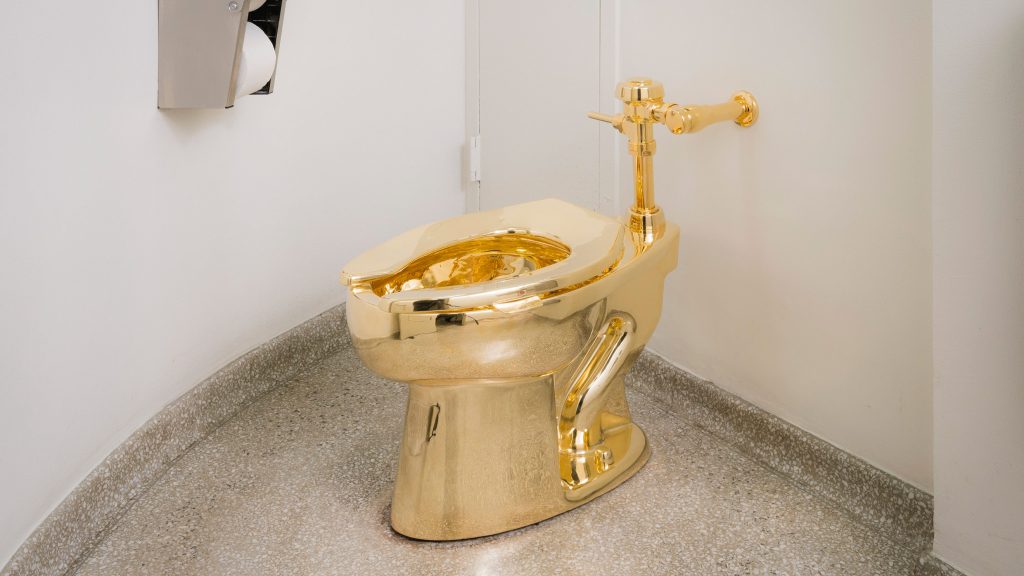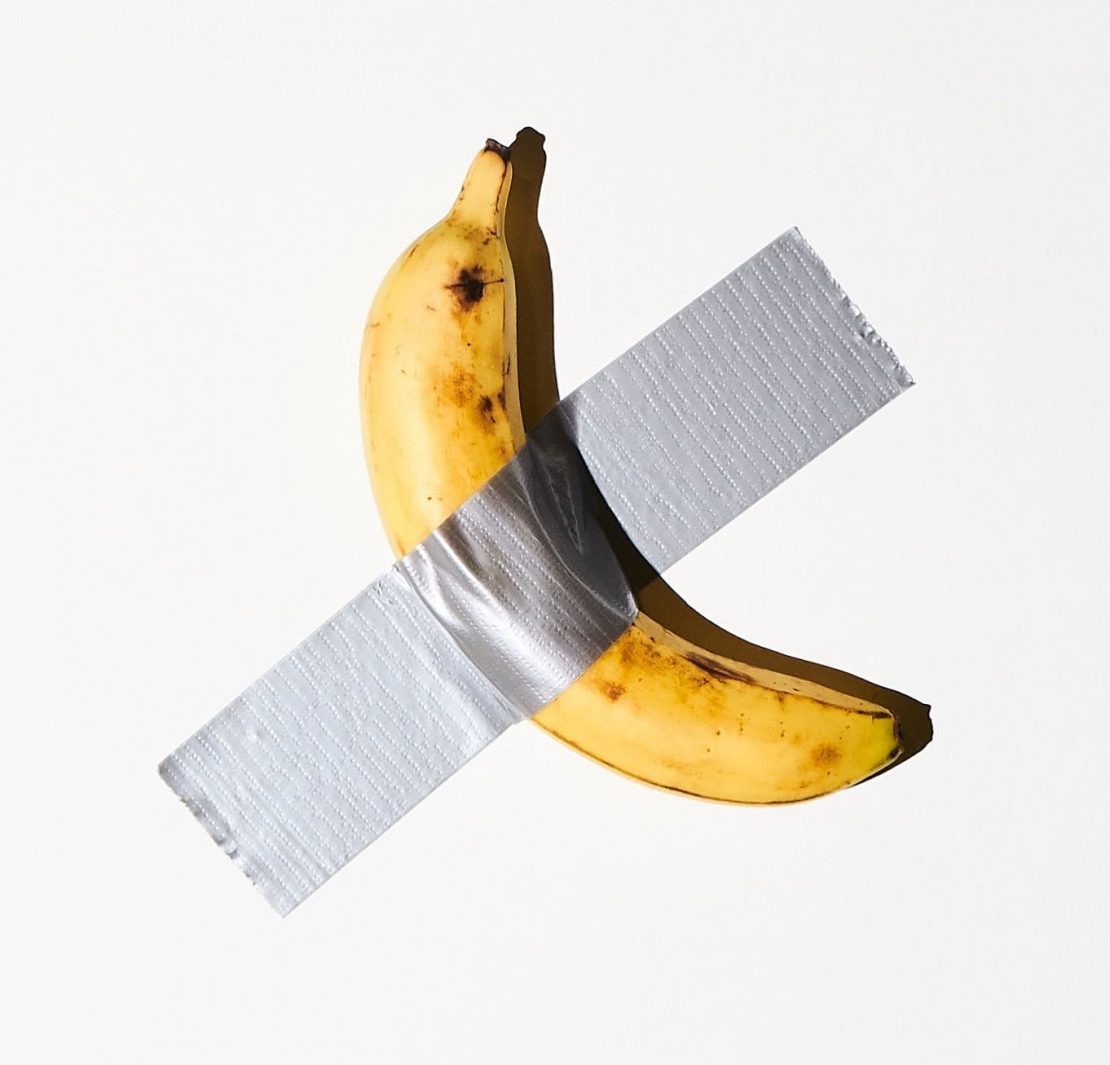A South Korean art student, Noh Huyn-soo, ate a $120,000 banana taped onto a wall at the Leeum Museum of Art in Seoul.
In a video from the scene of the crime, we can see Noh removing the banana from the white gallery wall, peeling it, and eating it over the course of a full minute.
The banana wasn’t like any other– Italian artist Maurizio Cattelan’s infamous artwork titled ‘Comedian’ has been the subject of controversy and debates for years now. At first glance, the conceptual artwork looks outrageous. It’s simply a regular banana and duct tape. This also isn’t the first time that someone has defaced the art. It made headlines back in 2019 when performance artist David Datuna ate it during the work’s debut exhibit at Miami Art Basel. Gallerist Emmanuel Perrotin then decided to remove ‘Comedian’ from view because of the dangerously large crowds it was attracting– after which Rod Webber scrawled ‘EPSTEIN DIDN’T KILL HIMSELF’ in red lipstick on the blank wall.
The artwork has also been the centre of many internet memes– and we can’t really blame them. But the banana is actually in on the joke. Why would such a replaceable piece of art be so expensive? And who would even buy it?
But this is conceptual art we’re talking about. As Noh himself told the local media outlet KBS, damaging a work of art can itself be seen as an artwork, saying: “I thought it would be interesting … isn’t it taped there to be eaten?” And he’s not far off. The Leeum Museum has already replaced it too– confirming that they won’t seek damages against the student. Even Cattelan himself seems indifferent to this new development, after he was informed of the situation, he reportedly simply responded: “No problem at all.”
Conceptual art is exactly what it sounds like. In the case of ‘Comedian’, the banana itself is not the art. The idea behind it is, and subsequently how the world interacts or reacts to it. The work’s title itself hints at its self-awareness of the comedic absurdity of its own evaluation of the art market. And it’s not the banana itself that sells either. Collectors who bought the artwork, and later the museums which received it– did not have a banana shipped to them with duct tape. Instead, what they got was a document, a so-called certificate of authenticity that granted them the right to recreate the work and instructions on how to do so.
Maurizio Cattelan has made a name for himself as an artist with his provocative artworks that are a rebellion against popular culture. Like, the ‘gold toilet’ for example. In 2016, the artist installed the work America in one of the lavatories of the Guggenheim Museum in New York. The 18-karat gold toilet is a tongue-in-cheek commentary on the excesses of America’s rich; a piece of satirical participatory art that welcomes people to actually use it. The museum offered it to President Trump after he requested to borrow a Van Gogh from the Guggenheim – unfortunately, he declined. Blenheim Palace in Oxford then bought it in 2019, where it was subsequently stolen and still remains missing.

Another time, he made his dealer, Perrotin dress up as a giant pink penis-shaped bunny for the duration of his exhibition at Perrotin’s Paris gallery. He called the piece “Errotin le vrai lapin (Errotin the true rabbit). By making Perrotin wear a ridiculous and humiliating phallic costume while carrying out his day-to-day work as a commercial gallery owner, the spectacle of the art market came into sharp view.
In similar veins, the banana on the wall also offers insight into how we assign worth and how we choose which objects to value. Over the years with constant vandalism, it has come to mean a lot of things– and it’s ultimately up to your interpretation, of what the banana means to you.





